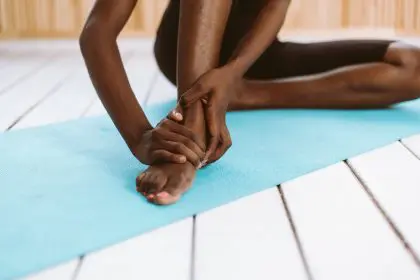That spark between you and your wife seems to have dimmed lately. Maybe it’s been a gradual change over months or years, or perhaps it happened more suddenly. Either way, the passionate connection you once shared feels increasingly distant. If you’re like most men in this situation, you’ve tried the standard approach of romantic dinners, flowers, and perhaps even gentle conversations that awkwardly dance around the issue. And if you’re reading this, those attempts probably haven’t yielded the results you hoped for.
The truth about female desire is far more complex and fascinating than most relationship advice suggests. A woman’s libido isn’t a simple on/off switch triggered by roses and compliments. It’s a sophisticated interplay of physical, emotional, hormonal, and relational factors that modern lifestyles often unknowingly disrupt. The good news? Understanding these factors opens up natural approaches to rekindling desire that actually work.
Let’s explore evidence-based strategies that address the root causes of diminished desire rather than just treating the symptoms. These approaches work with her body’s natural systems and your relationship’s unique dynamics to cultivate genuine desire rather than obligation or performance.
Understanding the stress-desire connection
Stress might be the single biggest libido killer in modern relationships, yet its effects often go unrecognized until desire has already significantly diminished.
The hormone hijack happening daily When stress becomes chronic, cortisol levels remain elevated, essentially hijacking the production pathways for sex hormones. The body literally prioritizes stress hormone production over sex hormone production, creating a biological environment where desire struggles to exist. This isn’t a choice your wife is making. It’s her body’s automatic survival response.
The solution isn’t simply “reducing stress” through generic relaxation techniques. It requires identifying and addressing her specific stressors while creating genuine recovery periods. Does she constantly carry the mental load of household management? Are work pressures following her home via email notifications? Is financial worry creating background anxiety? Tackling these concrete stressors delivers far better results than general relaxation suggestions.
One often-overlooked factor is the lack of transition time between daily responsibilities and intimate connection. Without clear boundaries between work mode, parent mode, and partner mode, the brain struggles to shift gears into a state where desire can flourish.
Create intentional transition rituals that signal to her brain that it’s safe to move from productivity to receptivity. This might be a 20-minute period where you both decompress separately before reconnecting, a shared shower that symbolically washes away the day, or a brief walk together that creates physical and mental space between responsibilities and intimacy. The specific ritual matters less than its consistency and mutual recognition of its purpose.
The overlooked physical foundations of desire
Physical factors create the biological foundation for desire, yet they’re frequently neglected in conversations about rekindling intimacy.
The fatigue factor nobody talks about: Chronic fatigue decimates libido through multiple pathways, affecting hormone production, mental energy for arousal, and physical capacity for pleasure. Yet many women push through exhaustion as a normal state, never connecting it to their vanishing desire.
Rather than focusing directly on sex, collaborate on creating conditions for genuine rest and energy recovery. This might mean renegotiating household responsibilities, protecting sleep as a non-negotiable priority, or finding small ways to reduce her daily energy expenditure. Pay special attention to sleep quality. Deep, restorative sleep directly influences hormone production and stress regulation, both essential for healthy desire.
The exercise connection most people miss: Both too little and too much exercise can negatively impact female libido. Sedentary lifestyles reduce circulation to the pelvic region and limit endorphin production, while excessive high-intensity exercise can trigger stress responses that suppress sex hormones.
Moderate exercise focusing on activities that increase body awareness often yields the best results for female desire. Activities like dance, yoga, swimming, or recreational sports that bring joy along with movement can reconnect a woman with physical pleasure in non-sexual contexts, creating a foundation for sexual desire to build upon. The key is finding activities she genuinely enjoys rather than exercises she forces herself to do.
Nutritional approaches to desire enhancement
What we eat directly affects hormone production, energy levels, and even genital blood flow, making nutrition a powerful tool for naturally enhancing libido.
The surprisingly powerful mineral many women lack: Zinc deficiency significantly impacts testosterone production in women. Though present in much smaller quantities than in men, testosterone plays a crucial role in female desire. Oysters earned their reputation as aphrodisiacs largely due to their high zinc content, but regular consumption of pumpkin seeds, grass-fed beef, and cashews can also help maintain optimal levels.
Beyond specific nutrients, overall eating patterns matter tremendously. Blood sugar crashes trigger stress responses that kill desire, while diets high in processed foods create inflammation that affects hormone balance. Supporting stable energy through regular meals containing protein, healthy fats, and complex carbohydrates creates the metabolic foundation for desire to emerge naturally.
The libido-boosting herbs worth considering: Certain adaptogenic herbs help the body resist stress while supporting hormone production pathways. Maca root has shown particularly promising results for female libido, helping to balance hormones without directly mimicking estrogen. Ashwagandha reduces cortisol levels, potentially freeing up resources for sex hormone production, while damiana has traditionally been used to reduce anxiety that inhibits desire.
These herbs work best as part of a comprehensive approach rather than as magic pills. They support the body’s natural systems rather than overriding them, meaning they tend to gently enhance desire over weeks rather than creating immediate effects. If considering supplements, choosing high-quality sources and starting with lower doses allows for monitoring individual responses.
Emotional safety as desire’s foundation
The emotional context of your relationship creates either fertile ground for desire or an environment where it struggles to take root.
The unseen walls blocking connection: Unresolved relationship conflicts create emotional barriers that directly impact physical desire. Many women find it nearly impossible to feel sexual desire toward someone they feel emotionally disconnected from or in conflict with. Yet these issues often remain unaddressed, creating invisible walls between partners.
Prioritize resolving conflicts completely rather than just moving past arguments. This means truly listening to understand her perspective, acknowledging impacts rather than just intentions, and finding resolutions that feel fair to both parties. One effectively resolved conflict does more for rebuilding desire than dozens of surface-level romantic gestures that leave underlying issues untouched.
The emotional generosity that fuels desire: Emotional generosity outside the bedroom directly influences desire within it. This means offering support, attention, and care without expectation of immediate reciprocation, creating an overall relationship environment of emotional abundance rather than scarcity.
Notice and appreciate her contributions to your shared life. Offer support before she needs to ask. Share your authentic thoughts and feelings in ways that create connection rather than burdening her with problems to solve. These ongoing demonstrations of emotional presence build the trust and security that allow vulnerability and desire to flourish.
Communication approaches that actually help
How you discuss intimacy dramatically affects whether desire can rebuild or gets further suppressed by pressure and misunderstanding.
Discussions about physical intimacy often happen at the worst possible moments, either during rejection or immediately afterward when emotions are heightened. These poorly timed conversations frequently create defensiveness and shame rather than understanding and connection.
Schedule dedicated time to discuss your intimate relationship when neither partner is seeking immediate physical connection. Create a safe conversation environment by explicitly agreeing that the goal is understanding, not immediate change or problem-solving. Use phrases that express your experience without implying blame, such as “I miss feeling close to you physically” rather than “You never want to be intimate anymore.”
Many couples operate with fundamentally different understandings of how desire works. The “desire map” exercise helps bridge this gap by identifying each partner’s unique pathway to desire.
Separately write down answers to questions like “What conditions help you feel open to physical connection?” and “What specific things make you feel desired?” Then share your answers, looking for patterns and differences in how you each experience desire. This often reveals that actions one partner thinks should create desire actually have little effect, while overlooked factors may have significant impact. This shared understanding allows for more effective approaches tailored to her specific desire patterns.
Creating space for desire to emerge
Paradoxically, creating space is often more effective for rebuilding desire than pursuing closer connection through physical intimacy.
Perceived pressure around physical intimacy triggers inhibitory responses in many women. Their bodies and minds essentially shut down desire as a protective mechanism against feeling inadequate or obligated. The more you focus on the absence of sex, the more pressure builds, further suppressing her natural desire.
Take physical intimacy off the table completely for an agreed-upon period, perhaps two to four weeks. This creates space for her desire to potentially emerge without performance expectations. During this time, focus on rebuilding non-sexual physical affection and emotional connection without any progression toward sexual activity. This pressure-free period often allows relaxation that’s essential for desire to naturally resurface.
Personal autonomy and self-development powerfully influence female desire. When life revolves entirely around responsibilities and relationship roles, the sense of individual identity that fuels passion often diminishes. Supporting her autonomy and growth may counterintuitively strengthen her desire for connection.
Encourage her pursuit of interests, friendships, and growth opportunities separate from your relationship. Ensure she has regular time for self-care and activities that connect her with her individual identity beyond roles like wife, mother, or professional. This separation creates the psychological space for desire to develop as an authentic choice rather than a relationship obligation.
Building a sustainable desire-friendly lifestyle
Lasting change requires creating a lifestyle that naturally supports desire rather than constantly working against it.
Start by prioritizing just one area from those we’ve discussed, focusing on changes that address your specific relationship patterns. Remember that female desire typically responds more to the removal of barriers than to artificial stimulation. Your goal is creating conditions where her natural desire can emerge rather than trying to generate desire through external means.
Track changes based on her genuine interest and engagement rather than just frequency of physical intimacy. The quality of connection matters more than quantity, particularly during the rebuilding phase. With patience and consistent attention to the foundations we’ve explored, many couples discover a more authentic and sustainable intimate connection than they experienced even in the early days of their relationship.














